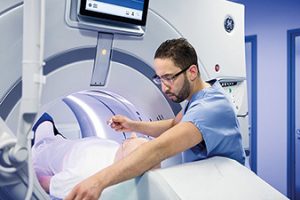Unlock Accurate Healthcare with Next-Gen Medical Diagnostics Software
In an era where technology transforms every aspect of our lives, healthcare is no exception. Next-generation medical diagnostics software is revolutionizing the way we approach patient care, offering improved accuracy, efficiency, and better outcomes.

The Importance of Medical Diagnostics Software
Medical diagnostics software is essential in identifying diseases, managing patient data, and improving treatment plans. This technology enables healthcare professionals to make informed decisions quickly, ultimately leading to enhanced patient care.
Key Features of Next-Gen Medical Diagnostics Software
- AI-Powered Analytics: Leverages artificial intelligence to analyze patient data and provide insights.
- Real-Time Data Processing: Allows for immediate results and timely decision-making.
- Interoperability: Integrates seamlessly with existing healthcare systems and electronic health records (EHR).
- User-Friendly Interface: Simplifies navigation for healthcare providers.
- Telemedicine Integration: Supports remote consultations and diagnostics.
Benefits of Using Next-Gen Software
- Improved Accuracy: Reduces the likelihood of human error in diagnostics.
- Enhanced Efficiency: Streamlines workflows, saving time for healthcare providers.
- Cost-Effective Solutions: Minimizes the need for additional tests and reduces patient costs.
- Better Patient Outcomes: Increases the likelihood of early detection and effective treatment.
Top 10 Rated Medical Diagnostics Software Companies in India
| Company Name | Key Features |
|---|---|
| Siemens Healthineers | AI integration, advanced imaging solutions |
| GE Healthcare | Comprehensive analytics, robust imaging tools |
| Philips Healthcare | Patient monitoring, telemedicine support |
| LabCorp | Extensive lab services, cloud-based solutions |
| Quest Diagnostics | Nationwide testing services, data analytics |
| Roche Diagnostics | Precision medicine, genetic testing capabilities |
| Abbott Laboratories | Point-of-care testing, user-friendly software |
| Cerner Corporation | EHR integration, population health management |
| McKesson Corporation | Supply chain solutions, data management tools |
| Hitech iSolutions | Customizable solutions, real-time data access |
Case Study: Successful Implementation of Medical Diagnostics Software
A notable example of successful implementation is Siemens Healthineers, which has revolutionized medical imaging with its AI-powered software. Their platform enhances image quality and reduces diagnostic time. In a recent study, hospitals using Siemens software reported a 30% reduction in diagnosis time, leading to earlier treatment initiation.
Cost Analysis
Next-gen medical diagnostics software varies in price based on features and deployment methods. Here are some average costs:
- Siemens Healthineers: Starting at ₹3,000,000 (approximately $36,000)
- GE Healthcare: Starting at ₹2,500,000 (approximately $30,000)
- Philips Healthcare: Starting at ₹2,000,000 (approximately $24,000)
Note: Prices can vary based on specific features, regional pricing, and contracts.
Challenges in Adoption
While the benefits of next-gen medical diagnostics software are significant, challenges remain:
- High Initial Investment: Many healthcare providers struggle with the upfront costs.
- Training Requirements: Staff need adequate training to maximize the software’s potential.
- Data Security: With increased data handling comes the responsibility of ensuring patient confidentiality.
Q&A Section
Q1: How does AI improve diagnostics accuracy?
A1: AI algorithms analyze vast amounts of data to identify patterns and anomalies that may be missed by human eyes.
Q2: Can these systems integrate with existing EHR systems?
A2: Yes, most modern diagnostics software is designed to be interoperable, allowing seamless integration.
Q3: What is the average ROI for hospitals investing in this technology?
A3: Hospitals typically see an ROI within 18-24 months through reduced costs and improved patient outcomes.
Visual Representation
To better illustrate the growth and adoption of medical diagnostics software, consider the following chart:
| Year | Market Size (in billion ₹) |
|---|---|
| 2020 | 45 |
| 2021 | 55 |
| 2022 | 70 |
| 2023 | 85 |
| 2024 | 100 |
Conclusion
The integration of next-generation medical diagnostics software into healthcare systems is not merely a trend but a necessary evolution. The potential for improved accuracy, efficiency, and patient outcomes is immense. As technology continues to advance, embracing these tools will be crucial for healthcare providers aiming to deliver the best care possible.
References
- www.siemens-healthineers.com
- www.gehealthcare.com
- www.philips.com/healthcare







Recent Comments